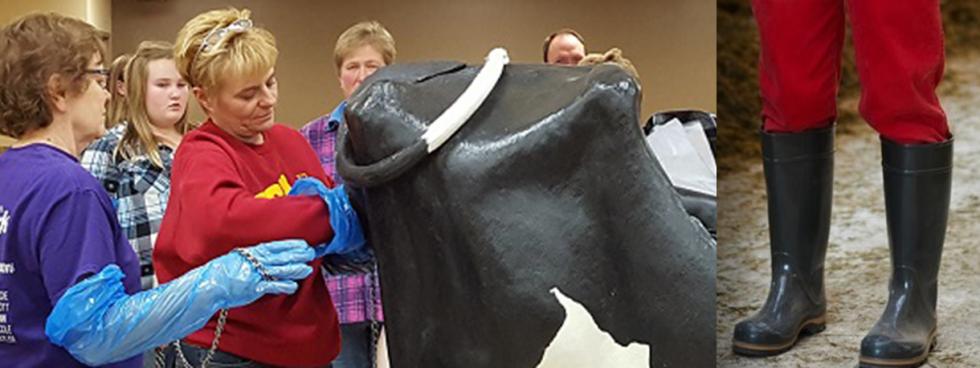
Ashley Thompson gives a glowing review for “Boots in the Barn.”
Thompson wrote “there is not a day that goes by where I’m not grateful I took the Boots in the Barn program.” She continues to state the knowledge she gained from the program benefited her cow-calf operation with every single calf born this past year. “We changed our procedures to bring the calf in to fresh bedding immediately with the cow to allow closer monitoring with colostrum consumption and overall health,” she writes. “Once we determine the calf and cow are healthy they are released back outside and pens cleaned for the next pair to check in.
“I pulled two calves with no assistance other than sending my boyfriend off for my calving kit and saved a calf born in a mud hole just last calving season.”
Thompson’s accolades are typical for the response “Boots in the Barn,” an ISU Extension program that features Dr. Caitlin Wiley, clinical assistant professor of veterinary diagnostic and production animal medicine. Wiley says she regularly receives positive reports back from individuals who have taken the program.
“Boots in the Barn” is designed for women beef and dairy producers involved in their cattle operations. Other Iowa State faculty involved in the program include Drs. Grant Dewell, Chris Clark and Tyler Dohlman.
Wiley guides participants using Frosty, CVM’s life-size cow model, by practicing putting chains on a calf to pull it and learning how to assist a cow in calving. Wiley also touches on calf care and colostrum.
“We center our meetings to the audience, which are primarily women and some kids,” Wiley said. “A lot of the discussion focuses on ‘what is normal’ and ‘what isn’t normal.’
“We want to build their confidence.”
Most of the participants have herds of 30 cows or less. And they come into the program with a wide range of experience with the animals.
“They have a vast array of knowledge,” Wiley said. “Some want to go right into putting chains on and pulling calf, while others need more detailed assistance.”
That assistance is necessary. Wiley says around 30% of heifers giving birth need assistance, while about 10% of the cows require assistance. The calf is primarily oversized or it the calf is positioned backwards in the birth canal. “Many of the women who come to Boots in the Barn are apprehensive at first,” Wiley said, “maybe they married a farmer and they didn’t grow up with it so they have no idea what to expect if they are left alone or faced with this situation.
“They truly want to know what to do when that time comes. To see the light bulb go off in their eyes that says ‘I can do this’ – that’s really rewarding.”
March 2021
